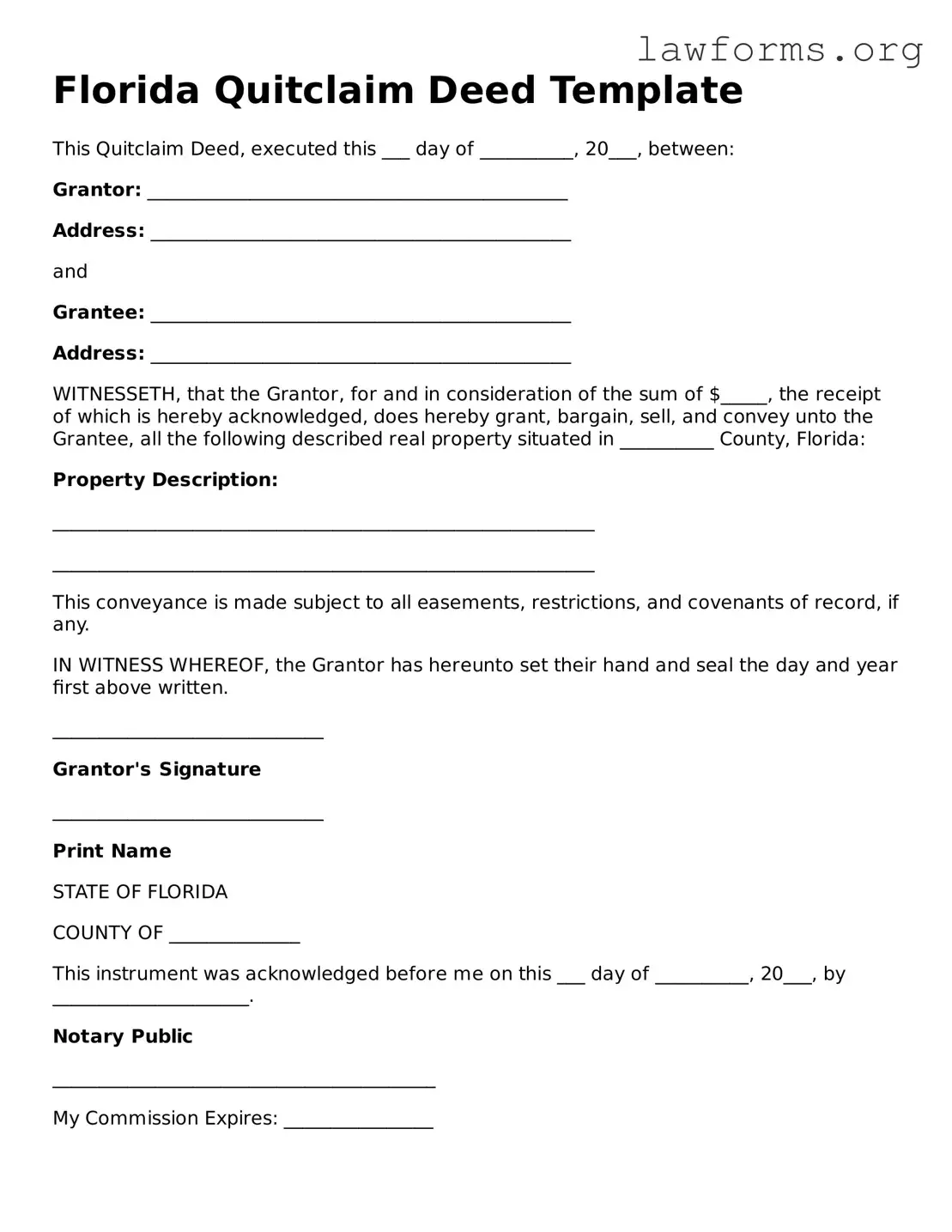Florida Quitclaim Deed Template
This Quitclaim Deed, executed this ___ day of __________, 20___, between:
Grantor: _____________________________________________
Address: _____________________________________________
and
Grantee: _____________________________________________
Address: _____________________________________________
WITNESSETH, that the Grantor, for and in consideration of the sum of $_____, the receipt of which is hereby acknowledged, does hereby grant, bargain, sell, and convey unto the Grantee, all the following described real property situated in __________ County, Florida:
Property Description:
__________________________________________________________
__________________________________________________________
This conveyance is made subject to all easements, restrictions, and covenants of record, if any.
IN WITNESS WHEREOF, the Grantor has hereunto set their hand and seal the day and year first above written.
_____________________________
Grantor's Signature
_____________________________
Print Name
STATE OF FLORIDA
COUNTY OF ______________
This instrument was acknowledged before me on this ___ day of __________, 20___, by _____________________.
Notary Public
_________________________________________
My Commission Expires: ________________
